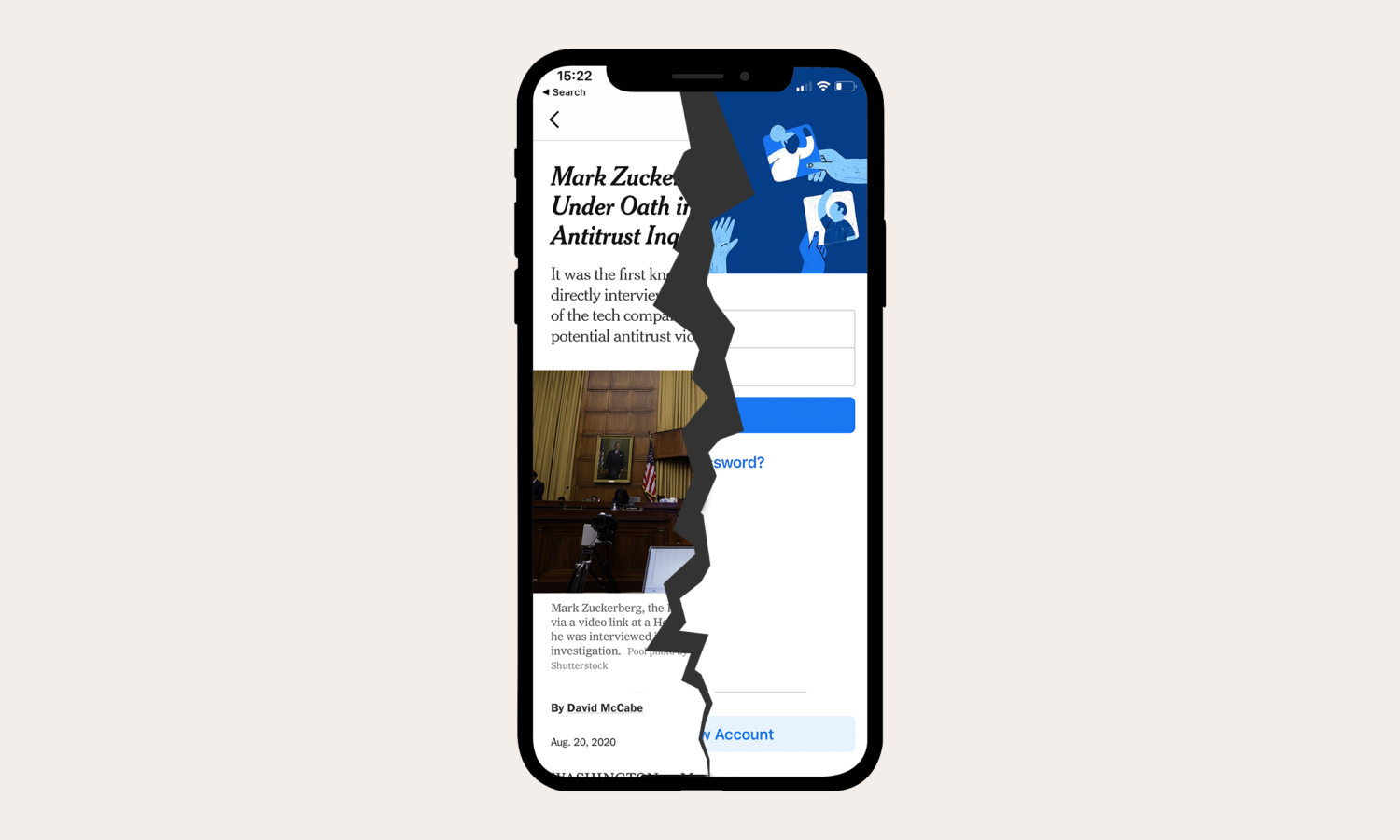I’ve often argued that tech companies are media companies and vice versa. There’s a future where these two industries are indistinguishable from each other. As this collision takes place, the values and norms of the two industries will find themselves coming to a head.
Among the various fault lines in our country, a growing one has opened up between Silicon Valley and the media. What was once mainly an economic fight has grown into a battle around values. This manifests in flare-ups like the #BoycottNYT hashtag that came after a New York Times reporter said he would reveal the identity of anonymous blogger Slate Star Codex.
It also manifests as accusations of “fake news” hurled back and forth among both parties. Journalists argue that through opaque algorithms and by acting as bad gatekeepers, Silicon Valley’s laissez-faire approach has been a net negative to our information ecosystem.
Conversely, Silicon Valley looks at traditional media as an old guard clinging to what little power it has left. They view the media’s coverage as overly moralizing. Indicative of the further cultural divide, one might interpret Silicon Valley’s critique of journalism to be that they don’t operate enough like universally applicable (i.e., “objective”) algorithms.
Notice that both of these claims can be true at the same time. Tech platforms do incentivize overly emotional/negative content to flourish and the media has increasingly leaned into this while questioning traditional notions of “objectivity,” itself a politicized term these days.
How did we get here?
The tech and media industries have been on this collision course for at least two decades.
Much of the story of digital media from 2001-2016 could be described as a new generation of digital media leaders arguing that we need to adopt some of the more practical elements from tech culture. Think of the mantras “fail early, fail often,” “try new things,” “embrace digital as a new way to engage readers,” etc. We have entirely new roles in newsrooms with descriptors like “head of product,” “off-platform,” or “social” that didn’t exist before. These journalism platypuses have become a unique but integral part of every news operation.
Another part of this narrative centers around the flow of money. A winner-takes-all approach developed for platforms and audience engagement guided the media towards an ultimately disastrous “pivot to video.” Media organizations changed their editorial approach and output to better conform to platforms like Facebook in exchange for access to hitherto unseen audiences.
As chief digital writer at Columbia Journalism Review, Mathew Ingram once put it, “What they (media orgs) are giving up in return (for traffic) may not be their souls, but it’s close enough.”
From 2014-2017, an increasingly clear lesson for the media was that they gave up some kind of editorial essence and value in exchange for financial gains. It also became clear: Media was in the weak position witnessing this slow-moving collision.
[the_ad id=”667826″]
The value collisions of today
But the fault lines grow. While part of the story continues to be about the flow of money, another part of it has turned into a collision of values.
Whereas before digital media was eager to learn from the culture of tech about being more productive, the two industries are now squaring off on what it means to be responsible to and for an audience. Companies like YouTube have to make decisions about what editorial voices they will platform. Companies like The New York Times have to seriously consider whether quoting a misinformed tweet from the president is the ethical thing to do.
The lines aren’t easily drawn, either.
In 2020, it seems everything — from mask-wearing to attending schools — can become politicized. So too can one’s media habits and values.
Where’s the line of fair criticism? What is the role of algorithms or influential media organizations in “cancel culture” (another term open for debate)? The media industry has had an internal reckoning/struggle over what it means to try and cover a society that grows new third rails by the month.
And now that conversation isn’t happening in a vacuum. Silicon Valley is a player, not an observer, in these conversations, which only turns up the heat on their relationship.
Objectivity
When it comes to questions of objectivity, it feels as though the roles are reversed.
Within journalism, there is a reckoning over “objectivity” and internal struggle sessions to replace it. Most notably in the wake of the George Floyd killing, Wesley Lowery has called to replace objectivity with “moral clarity.” In The New York Times, Lowery makes a compelling case that news organizations, which have historically been rooted in objectivity as a central lens, should wear their choices on their sleeves and take sides.
This moralistic view of coverage is in stark contrast with Silicon Valley’s default cultural assumption.
Within the wild west of entrepreneurial Silicon Valley, there’s a call for something more akin to logically adherent forms of objectivity and truth in media. While no algorithm is “objective” and all code is political, algorithms do scale and can be applied universally. That sense of universality in tech has an air of traditional “objectivity” attached to it.
[the_ad id=”667872″]
Who has access to influence
Silicon Valley’s libertarian streak tends to make it more laissez-faire when it comes to being a gatekeeper. The internet itself was originally seen as non-discriminatory. Open source touted itself as “free” as in speech (not beer). In 2020, with the rise of cyber-nationalism, Silicon Valley is having its own internal reckoning over just how open and accessible it can be to everyone.
While platforms are trying to combat misinformation being spread on their platforms, it feels as though this is done as an act of appeasement, not from a place of principle. If left to their own devices, platforms would probably rely on the “objectivity” algorithm referred to above to act as the only real gatekeeper.
As tech companies become more and more like media companies, the traditional sense of gatekeeping and sensemaking is falling to them — and it needs to be applied at scale (or raises the question if something like that ever can scale?)
Meanwhile, a historical tenet of journalism is setting the stage for what the public pays attention to and discusses. Acting on this principle led to the ultimate firing of James Bennet from The New York Times’ opinion section.
Even in this infamous incident, the collision between tech and media was playing out.
It started with an editorial judgment call to platform a specific voice — Arkansas Sen. Tom Cotton’s. Vociferous critiques of that decision were empowered through platforms and algorithms that turned these individual critiques into a cacophonous surge. The platforms allowed the critiques to find meaning that essentially forced The New York Times to reverse their original editorial decision.
Regardless of whether you think The New York Times ultimately did the right thing, it’s impossible for this incident to have occurred without both cultural principles in place — algorithms giving an open platform for the public to critique and news organizations making/changing their judgment calls about who should be platformed.
It is another point of collision that shows how these intertwined relationships are getting even muddier.
There is a future
There’s a future where technology companies and media companies are indistinguishable from each other. But we aren’t there yet. These two industries remain distinct from each other — but I think they recognize the collision course they are on.
The new CEO of The New York Times has even said she wants the Times to be a world-class technology company. And CEOs like Facebook’s Mark Zuckerberg and Twitter’s Jack Dorsey increasingly talk about how they can improve their platforms’ relationships with our media ecosystem.
I have often referred to journalists as a diaspora of sorts. Maybe we will find a new home as part of the tech industry. The question is, what cultural values and traditions will we cling to and what are we willing to let pass? Everything is up for grabs, from the inverted pyramid and objectivity to mediums and organizational structure.
We don’t have to absorb everything from the culture we are colliding with (and vice versa) but hopefully we can enrich each other. Because what is at stake isn’t just how we make money or if we work in open desk offices, but how we as a society talk to ourselves through the media.
[the_ad id=”667878″]
David Cohn is a co-founder and chief strategy officer of Subtext, a text-based subscription platform that allows journalists, media companies, and other creators to communicate with their subscribers directly via text. He is based in Berkeley, California, and can be reached on Twitter @Digidave.






